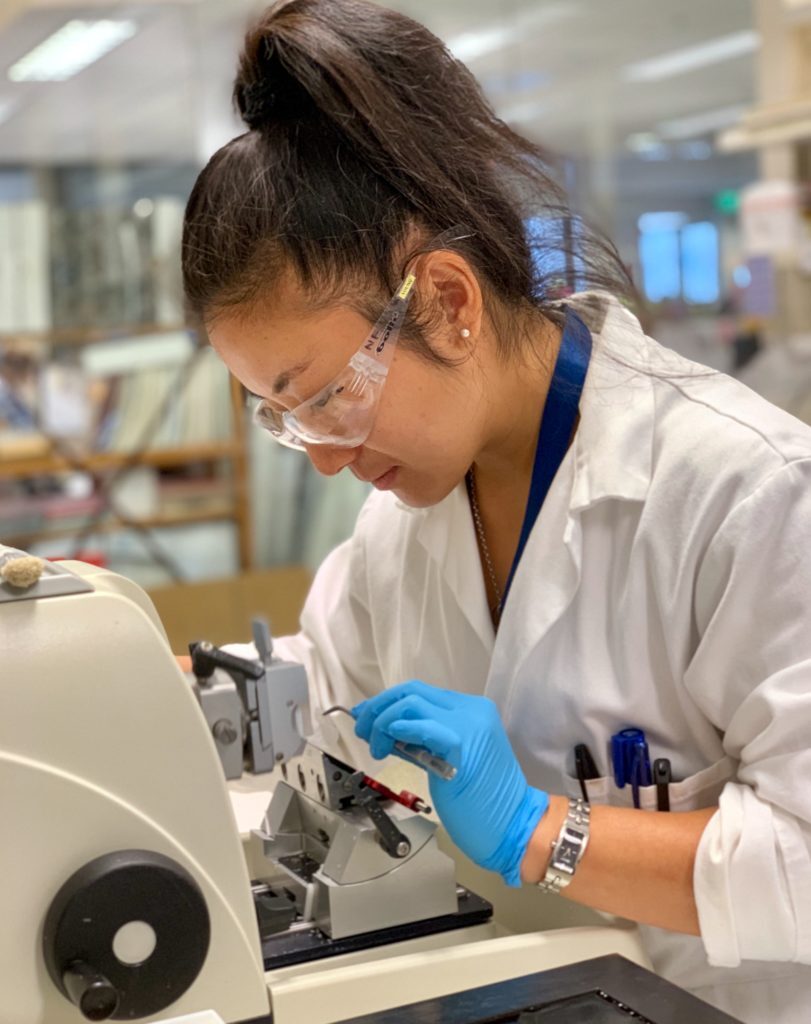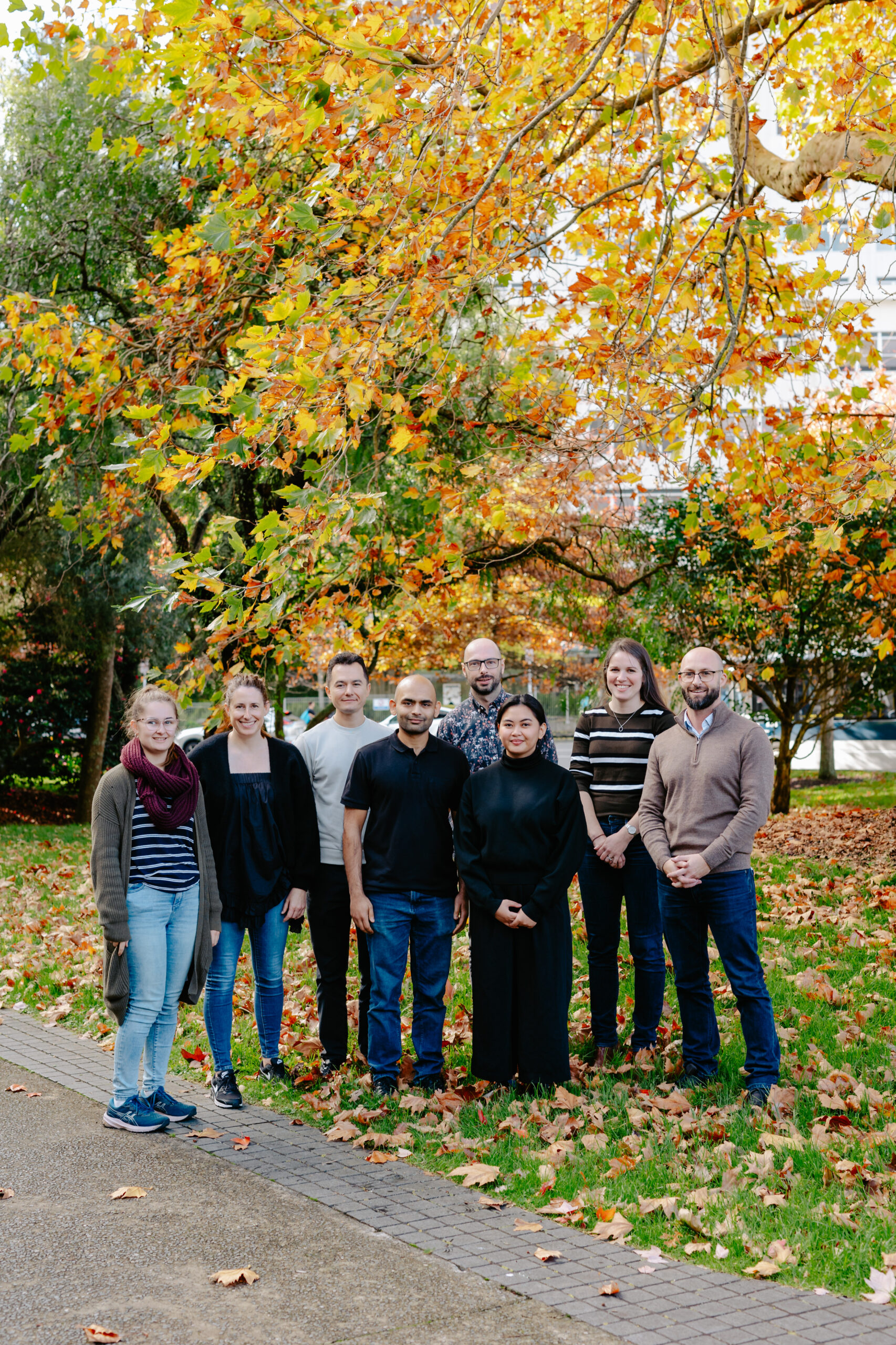The CatWalk
Cure Programme
Healing the injury
Preclinical research
The Cure Programme focuses on healing damaged spinal cord tissue and regenerating nerves.
This programme supports a dedicated, multi-disciplinary team of researchers, dubbed ‘The Spine Squad’. Weaving together research from across disciplines, the Spine Squad are unique. Their research on cellular regeneration; neuroprotection; and novel therapeutic strategies is world leading.
The Cure Programme is a deliberate step away from traditional funding models. Supporting a dedicated team drives research at pace, fosters collaboration and sparks innovation.
Funding this programme is essential to advance a cure. Specifically, the Cure Programme aims to:
- Drive the development of novel treatments to restore function and improve quality of life.
- Support the progression of therapies through human trials, accelerating access to new treatments.
Our mission is to find a cure for paralysis from spinal cord injury. Since 2005, CatWalk has supported local research, developing it from its infancy to today’s collection of world-class scientists.
Recently, the research we have funded has been showing results, in part because our researchers have been collaborating. Professor Darren Svirskis’ work on sustained electrical fields has been driven hand-in-hand with Dr Bruce Harland’s research on new biomedical implants, which has also enabled Dr Brad Raos to examine the development of electrical biomarkers following spinal cord injury. Dr Amy McCaughey-Chapman groundbreaking progress in cell regeneration has just reached the point that it can be enhanced by Darren’s research.
Each have shown results and we want them to continue. Aligned with other cherry-picked post-doctorate researchers, PhD experts and promising post-graduates at the University of Auckland, we are now empowering them to work as a team in a new way.
14.5%
16.9%
What is different?
“The classic research funding model works but does not provide continuity nor cross-discipline integrity”, says Darren. By leveraging existing grants, the Cure Programme provides the Spine Squad with five years of sustained funding, keeping them laser-focused and driving groundbreaking results.
We’re also providing a top-flight international scientific advisory group to guide research and ensure access to the latest international breakthroughs. In a novel approach, the team will be empowered to pivot their efforts based on their discoveries.
Through this process we’ll grow research capability and expand our spinal cord injury workforce to continue the drive for a cure.
Darren has provided a very clear goal. “By the end of the five years, the Spine Squad aims to achieve a major milestone – getting an injured rat walking, demonstrating successful preclinical models ready to translate to clinical trials.”
Vision for the future
At the conclusion of the Cure Programme, CatWalk will have created a successful, translatable, animal model, opening the door to Government and international funding.
We will have built a Centre of Excellence. It will help to retain the best New Zealand minds, connecting them with strong international partnerships, including our partners in Australia. In this way, the Cure Programme will accelerate the international pursuit for a cure for spinal cord injury paralysis.
It’s no longer a matter of if, but when. Join us in making it happen quicker, led by New Zealand.

The Spine Squad
Based at the University of Auckland, headed up by Professor Darren Svirskis.
They’re a multi-disciplinary team built around the most promising of the researchers whose work we have funded over the last few years. We’ve pulled them together and are maintaining their momentum by taking four proven streams of research and integrating them in ways not done anywhere else.
Together, the Spine Squad researchers are stimulating injured tissue to replace cells that have been lost or damaged to improve motor and sensory function. “This regenerative focus is different and complementary to other approaches around the world” explains Darren. “Rather than bypassing the injury, the Spine Squad is looking to heal it, and plot the pathway to human clinical trials.” The key to healing is that all functions of the spinal cord are being examined for repair, with walking being symbolic of the end goal.
Professor Darren Svirskis is a problem solver. “I grew up on a farm,” he says, “and I loved it. I loved it because I spent all my time figuring out how to fix problems. How could I get this piece of equipment to that part of the farm, in time for a particular thing to happen, when the original parts weren’t designed to go together? There was always a solution, but the answers didn’t always come from the places you expected them to.”
Darren leads the Spine Squad and has been instrumental of creating the team ethos. “My approach is to look across disciplines and bring together the different tools, techniques, knowledge, and skills to work in unison and heal the spinal cord.”
Darren believes that the quickest way to a cure is a straight line. The boundaries between disciplines don’t matter. “Thanks to CatWalk, the Spine Squad is able to look right across the research spectrum. We’ll be able to hunt out different combinations and possible solutions focussing on the one objective – curing spinal cord injury.”
Renowned neuroscientist Professor Martyn Goulding, Ph.D, joined the CatWalk Board in 2024. At The Salk Institute for Biological Studies in the USA, Martyn is the Departmental Chair of the Molecular Neurobiology Laboratory as well as holding the current Frederick W. and Joanna J. Mitchell Endowed Chair.
With a distinguished career unravelling the complexities of neural circuits in the spinal cord, Professor Goulding brings unparalleled expertise to this crucial intersection of science and advocacy. His groundbreaking work, marked by a keen understanding of the intricacies of the nervous system, has earned him international acclaim, including the prestigious Brain Prize in 2022 for his pioneering work.
Martyn has agreed to convene CatWalk's Scientific Advisory Board using his considerable pull to attract the leaders in the world of spinal cord injury research. His strategic vision and scientific acumen will be invaluable to ensuring the Cure Programme’s transformative potential.



